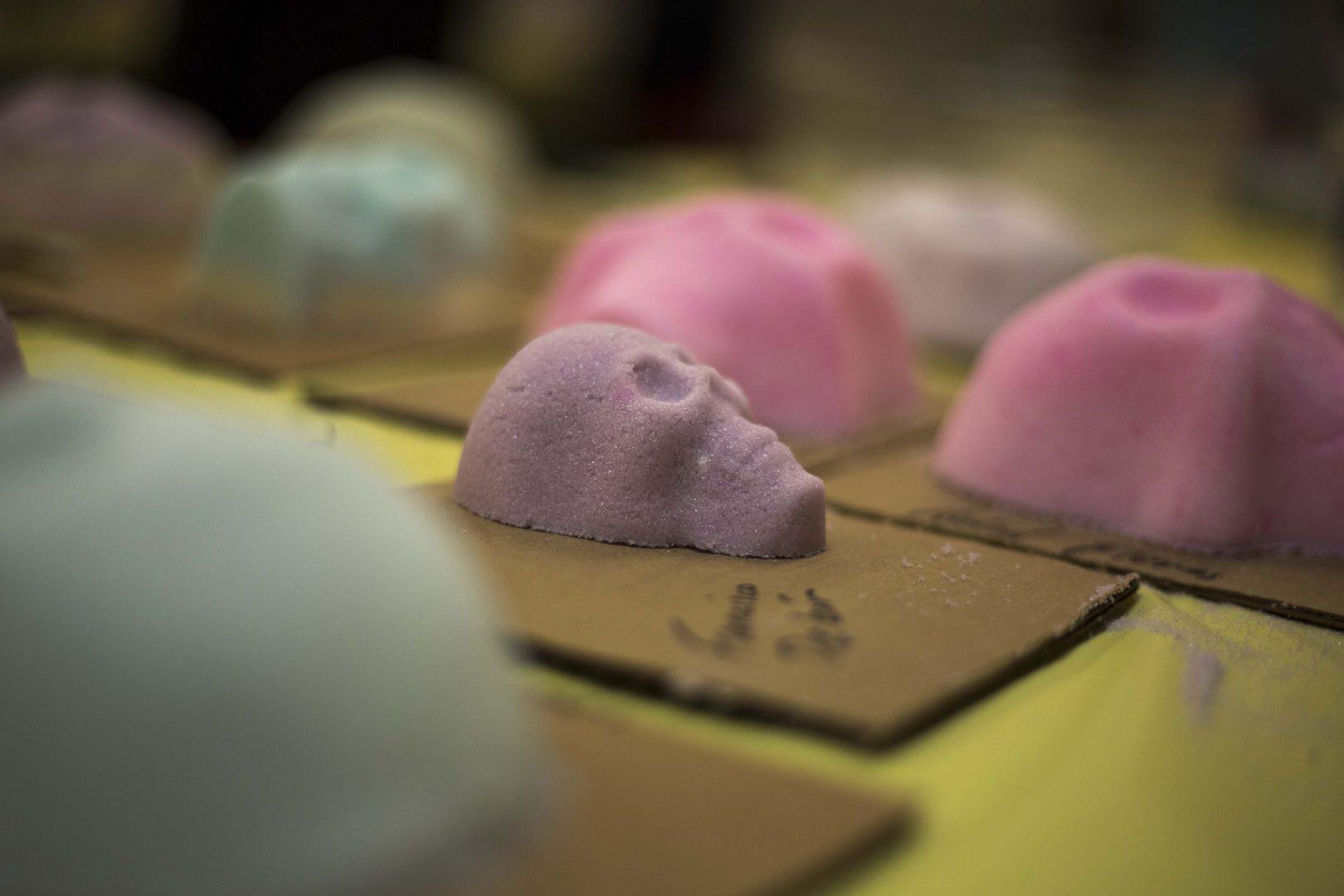One cup of sugar, one tablespoon of meringue and one tablespoon of water were all students needed to create their own sugar skulls in preparation of El DÃa de los Muertos celebrations.
Students of all backgrounds gathered Monday for a sugar skull workshop, hosted by the Cross Cultural and Gender Center Latino/a Programs and Services.
About 30 students were taught how to create sugar skulls by Arturo Breceda from the College Assistance Migrant Program (CAMP).
The center hosted a similar event last year. After a successful event, center officials decided to split the workshop into two days this year: one for creating the skulls and the other for decorating.
During the workshop, which was held at University Courtyard in the Baker Recreation Room, students were asked what DÃa de los Muertos meant to them.
Answers varied from celebrating and honoring family deaths to making it a day when the dead can return in spirit.
“It’s a day that we come together,” Breceda said. “The living come and give their time to remember those that are no longer in the physical world. It’s a day that we honor them with their memory.”
The tradition has been around for the past 3,000 years, said Breceda, expanding from the Nahuatl tribes from Central Mexico down to El Salvador.
And although the Nahuatl tribes spoke in different dialects, the tradition was similar, Breceda said.
“Through the Spanish conquest, the tradition was almost eradicated,” Breceda said. “Many tribes were still trying to hold the tradition, but they had it in secret.”
The tradition was eventually adopted by Catholic religious followers, and it was shortened to two days — to revolve entirely around family.
“I know like myself, for me, it’s family first before anything,” Breceda said. “I always try to remember that. I think that’s why the tradition was able to survive.”
The skull was adopted in the early 20th century, he said, after cartoonist Jose Guadalupe Posada created “La Calavera Catrina” as a parody skull. Now the symbol is decorated in bright festive colors to help others not to fear death.
“It’s a part of life. We shouldn’t be scared of something that is going to eventually happen,” Breceda said. “The skulls are a way to remind people that you will have loved ones who will care for you.”
Brenda Garcia, academic and career coordinator for CAMP, said the best place to make the skulls is in a dry room, where air moisture is not sucked into the skull mix.
“Once you pack down your sugar into the mold, you could just flip it over [onto your surface], and it should easily come out,” Garcia said.
The mixture resembles the consistency of sand, and it slowly released a sweet smell as skulls were molded.
The skull-making made Karmelita Medina feel happy. The sophomore majoring in kinesiology said that, while she doesn’t always celebrate DÃa de los Muertos, she’s always wanted to make a sugar skull.
“One thing that I learned that surprised me was how DÃa de los Muertos was celebrated differently from other tribes,” she said. “I always thought it’s always been the same thing that everyone celebrated, but really it was completely different then it merged into one.”
Although students had completed their skulls, some stuck around to make more for other students to decorate Wednesday during the second workshop.
The Sugar Skull Decorating Workshop will be held Wednesday in the Baker Recreation Room at University Courtyard from 4:30 to 6:30 p.m.
That same day, the CCGC and Student Involvement will host the 11th annual viewing of altars at Fresno State’s Speakers Platform from 3 to 5:30 p.m.
The altars will be on display throughout Thursday from 6:30 to 8 p.m. Aztec dancers will open and close the ceremony.




